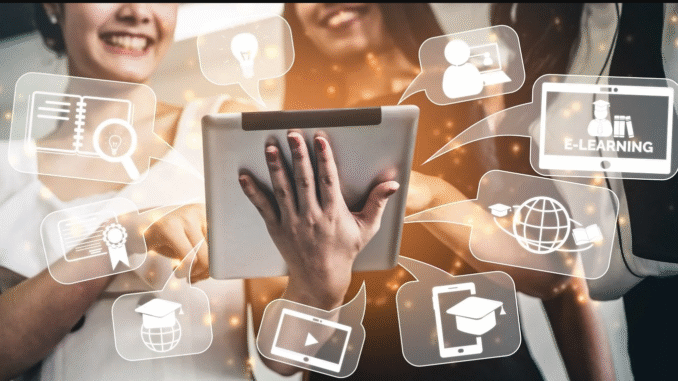
How Technology Is Revolutionizing Modern Education in 2025
The education landscape is undergoing a transformation like never before. As we move further into the digital age, technology has become a cornerstone of modern education, influencing how students learn, how teachers instruct, and how schools operate. In 2025, classrooms around the world are no longer limited by physical walls or traditional textbooks. Instead, they are dynamic, interactive spaces shaped by innovation, personalization, and accessibility.
Here’s a comprehensive look at how technology is revolutionizing education in 2025, and what it means for students, educators, and the future of learning.
1. AI-Powered Personalized Learning
One of the most significant breakthroughs in education is the widespread use of Artificial Intelligence (AI). AI-powered platforms in 2025 can now tailor lesson plans, quizzes, and learning paths based on each student’s strengths, weaknesses, and learning pace. This level of personalization ensures that no student is left behind.
Platforms like adaptive learning systems analyze student performance in real-time and automatically adjust content difficulty, offer remediation, or advance more quickly if the student is excelling. This has made learning more efficient and customized, moving away from the outdated one-size-fits-all model.
2. Virtual and Augmented Reality in the Classroom
Virtual Reality (VR) and Augmented Reality (AR) are no longer novelties—they’re essential tools in today’s classrooms. These immersive technologies provide students with hands-on experiences without leaving the classroom.
Imagine a history lesson where students walk through ancient Rome, or a biology class where they explore the human heart in 3D. In 2025, this is not just possible—it’s common. AR overlays digital content onto the physical world, while VR transports learners to entirely new environments. These technologies make learning visual, interactive, and memorable.
3. Global Learning and Remote Classrooms
Thanks to advancements in video conferencing tools and cloud-based collaboration platforms, education is no longer bound by geography. Students from rural areas or underdeveloped regions can now access world-class instruction and resources from anywhere in the world.
Platforms like Zoom, Microsoft Teams, and Google Classroom have evolved into robust virtual learning environments that offer features like real-time translation, interactive whiteboards, and AI-driven engagement tools. In 2025, learning is truly global, breaking barriers of distance, language, and economic background.
4. Gamification Enhances Engagement
Gamification has emerged as a powerful tool to increase student engagement and motivation. By integrating game elements such as points, levels, badges, and leaderboards into lessons, educators can turn learning into a fun and competitive experience.
Apps and platforms like Kahoot!, Classcraft, and Quizizz have made lessons more interactive, while also improving retention and encouraging collaboration. In 2025, gamified learning is not a trend—it’s a proven pedagogical strategy used in both primary and higher education.
5. Cloud Computing for Seamless Access
Cloud technology plays a central role in modern education by enabling anytime, anywhere access to learning materials. Students and teachers can store, share, and collaborate on documents in real time using platforms like Google Drive, Dropbox, and OneDrive.
This flexibility supports blended and hybrid learning models, allowing learning to continue beyond school hours. Teachers can assign homework, provide feedback, and track progress—all from the cloud. In 2025, the classroom doesn’t close when the bell rings.
6. AI-Driven Assessment and Feedback
Traditional testing methods often fall short in evaluating a student’s full range of abilities. With AI, assessments are now more dynamic and insightful. Intelligent systems can evaluate open-ended responses, provide instant feedback, and detect patterns that help identify learning difficulties early.
These tools also help teachers reduce their administrative workload, freeing up more time for student interaction and lesson planning. The result is a more responsive, data-driven approach to teaching and learning.
7. Robotics and Hands-On STEM Learning
Robotics education has taken a huge leap forward in 2025. Students are now designing, building, and programming robots as early as elementary school. These hands-on experiences boost interest in STEM (Science, Technology, Engineering, and Math) fields and teach practical problem-solving skills.
Robotics kits and platforms like LEGO Mindstorms, VEX Robotics, and Raspberry Pi have become classroom staples, helping students learn engineering concepts, coding, and teamwork in a tangible, engaging way.
8. Digital Literacy as a Core Skill
In 2025, digital literacy is just as important as reading and writing. Students must learn how to evaluate online information, protect their digital privacy, and use technology responsibly. Schools have incorporated cybersecurity, online ethics, and media literacy into their core curriculums.
This shift prepares students for a future where digital communication and information analysis are vital skills—not just in school, but in life and work.
9. Smart Classrooms and IoT Integration
Smart classrooms equipped with Internet of Things (IoT) devices are becoming the norm. These environments include smart boards, connected devices, environmental sensors, and attendance trackers. IoT enhances classroom efficiency, security, and interactivity.
For example, smart whiteboards automatically save notes to the cloud, while AI-based cameras can monitor engagement levels and provide analytics to help teachers refine their methods. In short, classrooms are becoming intelligent ecosystems that support learning in real time.
10. Teacher Roles Are Evolving
Despite all these technological advances, teachers remain at the heart of education. However, their role has evolved from content deliverers to facilitators of learning. Technology handles routine tasks and provides data-driven insights, allowing teachers to focus more on mentoring, guiding discussions, and providing emotional support.
Professional development has also become more tech-centric, with educators continually upskilling in areas like edtech tools, coding, and data analysis.
Final Thoughts
The year 2025 marks a pivotal moment in the history of education. What was once considered futuristic is now reality. From AI-driven personalization to virtual classrooms and smart devices, technology is reshaping education at every level.
The ultimate goal remains the same: to equip students with the skills, knowledge, and confidence they need to succeed in an ever-changing world. By embracing innovation and staying adaptable, educators and learners alike can make the most of this digital transformation.
